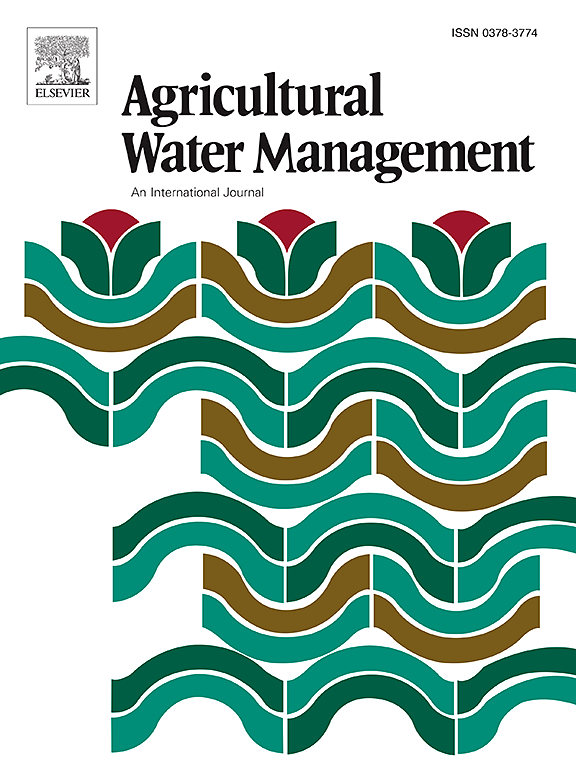A process-based modelling of groundwater recharge under contrasting irrigation methods in semi-arid crops
IF 6.5
1区 农林科学
Q1 AGRONOMY
引用次数: 0
Abstract
We present an application of the process-based ecohydrological model EcH2O to evaluate water-energy coupling and resulting percolation beneath the root zone under contrasting irrigation practices in a semi-arid region. The study uses high-resolution data from two wheat fields employing flood and drip irrigation, in a multi-objective calibration and evaluation approach with datasets encompassing soil water content at two depth ranges, energy balance components, and percolation rates at two depths. We find that the model reasonably simulates water fluxes and energy partitioning, and captures the distinct hydrological responses of the different irrigation methods. The best overall performances were found at both sites using calibration scenarios combining all available datasets, pointing at complementary information footprints. These footprints were nonetheless heteregeneous, as for example simulation of energy balance components showed little change between calibration scenarios, while percolation fluxes were acceptably captured only if the corresponding datasets were included in the calibration. Results highlight larger percolation dynamics and amounts beneath the root zone of flood-irrigated wheat, yet the two indices used here for irrigation efficiency reveal opposite rankings between the two irrigation methods depending on whether deep percolation is included (as a proxy for aquifer recharge) or not in the hydrological system being analysed. These findings challenge the view on greater water-saving benefits associated with drip irrigation, given the complex trade-offs between irrigation amounts and timing, plant water use, and return flows (e.g. underlying aquifer recharge). This analysis is a step forward for informing integrative and sustainable water management strategies in arid and semi-arid agricultural contexts.
半干旱作物不同灌溉方式下地下水补给的过程模拟
我们提出了一个基于过程的生态水文模型EcH2O的应用,以评估在半干旱区不同灌溉方式下的水-能耦合和根区下的渗流。该研究使用了来自两个采用洪水和滴灌的麦田的高分辨率数据,采用多目标校准和评估方法,数据集包括两个深度范围的土壤含水量、能量平衡成分和两个深度的渗透速率。研究发现,该模型较好地模拟了水通量和能量分配,并捕捉了不同灌溉方式的不同水文响应。在结合所有可用数据集的校准场景中,两个站点都发现了最佳的总体性能,指出了互补的信息足迹。然而,这些足迹是不均匀的,例如,能量平衡成分的模拟在校准情景之间几乎没有变化,而只有在校准中包含相应的数据集时,才可接受地捕获渗透通量。结果表明,在洪水灌溉小麦的根区下方有更大的渗流动态和数量,但这里用于灌溉效率的两个指标显示,两种灌溉方法之间的排名相反,这取决于所分析的水文系统中是否包括深层渗流(作为含水层补给的代理)。这些发现挑战了滴灌带来更大节水效益的观点,因为滴灌在灌溉数量和时间、植物用水和回流(如地下含水层补给)之间存在复杂的权衡。这一分析是为干旱和半干旱农业环境下的综合和可持续水管理战略提供信息的一步。
本文章由计算机程序翻译,如有差异,请以英文原文为准。
求助全文
约1分钟内获得全文
求助全文
来源期刊

Agricultural Water Management
农林科学-农艺学
CiteScore
12.10
自引率
14.90%
发文量
648
审稿时长
4.9 months
期刊介绍:
Agricultural Water Management publishes papers of international significance relating to the science, economics, and policy of agricultural water management. In all cases, manuscripts must address implications and provide insight regarding agricultural water management.
 求助内容:
求助内容: 应助结果提醒方式:
应助结果提醒方式:


